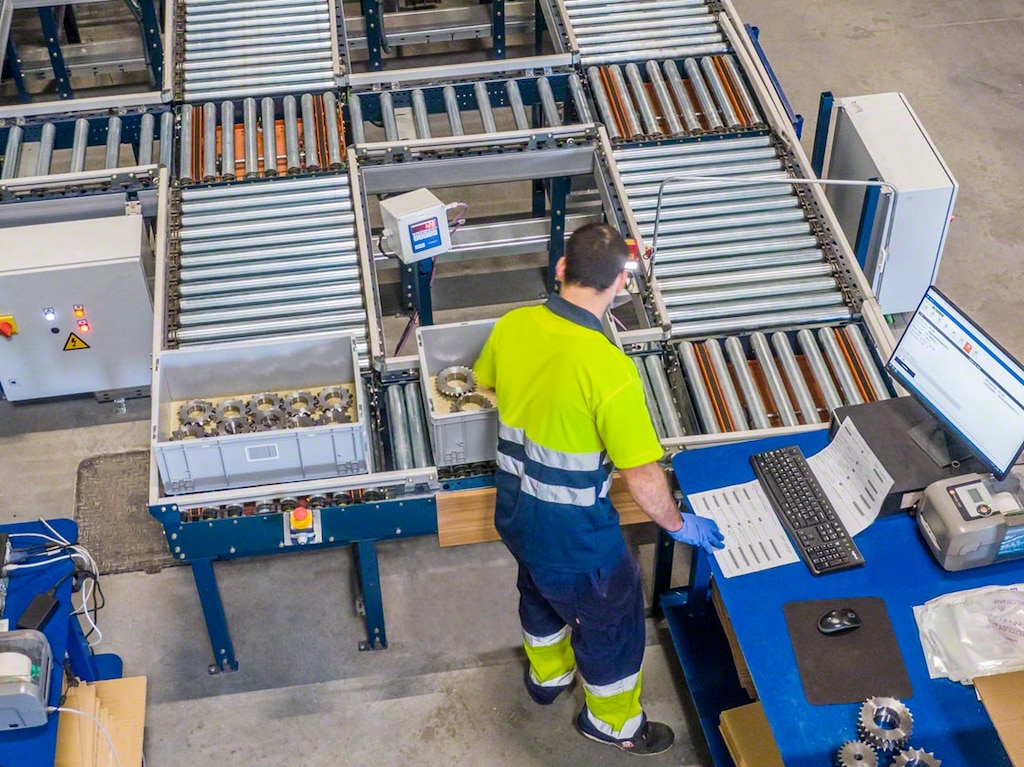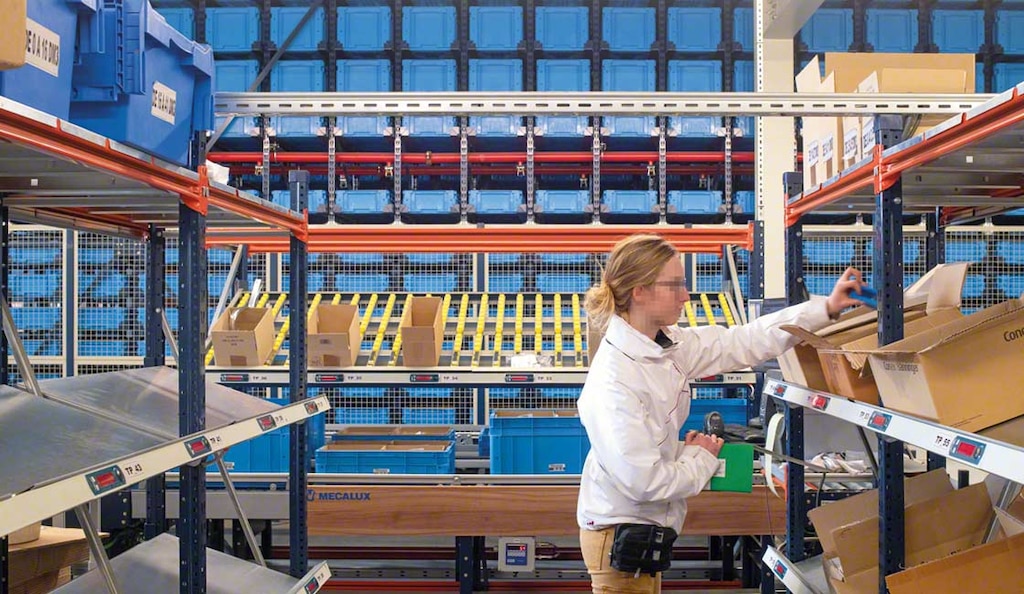
Semi-automated warehouse: technology and the human factor combined
A semi-automated warehouse is the logistics solution preferred by businesses that can’t or don’t want to fully automate their facilities. It pairs technology and human labor to leverage the advantages of automated systems and manually performed tasks.
What semi-automated solutions are available on the market? When is the right time to invest in them? And what are their benefits? We’ll answer all these questions in this post.
Semi-automated warehouse: definition
A semi-automated warehouse fuses automated storage, management, and transportation solutions with manual operations. Although these facilities are more technologically advanced than conventional warehouses, the human factor continues to play a crucial role.
For a warehouse to be categorized as semi-automated, specific intralogistics operations (goods receipt, transportation, storage, order prep, and dispatch) need to be automated to a certain degree. Meanwhile, other processes are still carried out manually.
7 benefits of a semi-automated warehouse
The semi-automation of a warehouse brings the following advantages:
1) Error reduction. Mistakes stemming from completely manual operations are prevented.
2) Raised productivity. Both automated equipment and picking assistance devices significantly boost the throughput of the operators working in the facility.
3) Added value. When certain processes are automated, such as product movements, operators can devote their time to other more value-adding tasks.
4) Decrease in maintenance costs. Automated goods handling minimizes wear and tear and damage associated with the repeated use of handling equipment such as forklifts and stackers.
5) Better employee satisfaction. The implementation of particular automated solutions frees operators from having to carry out the more tiring tasks, markedly improving their level of job satisfaction.
6) Increased product security. Automated transportation of the goods helps to keep them in excellent condition.
7) Perpetual inventory. The use of a warehouse management system (WMS) makes it possible to identify and monitor stock in real time. With the movement history, logistics managers can rigorously control product traceability.
Implementing automation in a traditional warehouse to a certain extent improves logistics performance, reduces errors, and cuts operating costs.

Semi-automated warehouse: solutions and examples
The quintessential semi-automated solution is the semi-automated Pallet Shuttle system. With this compact storage system, a motorized shuttle moves inside the storage channels, loading and unloading pallets. All the operators have to do is place the pallet in the first position of each channel with the help of a forklift. Alisson Ferreira, Manager of Planning and Logistics Operations at Coca-Cola Refrescos Bandeirantes (Brazil), explains the advantages of this solution in the warehouse: “The Pallet Shuttle gives us greater productivity because a motor-driven shuttle moves the pallets inside the channels automatically. Our employees have adjusted to this operation very quickly. From day one, the team has noticed that, with this system, work is done faster and safer.”
Another resource commonly found in semi-automated warehouses is automated goods flows. Pallet conveyors, for example, enable you to mechanize internal movements between differentiated areas and then continue with manual operations. This type of solution was employed by Tadim, a multinational marketer of nuts and dried fruits. “By connecting the warehouse and production via conveyors, we’ve raised the number of daily goods receipts by 73%,”says its Logistics Manager.
Automating the transportation of products also serves to implement picking methods such as goods-to-person (GTP), an order picking strategy whereby a conveyor system for boxes moves the merchandise to the pick stations, where operators sort the goods manually. For instance, in the Grupo Rossignol warehouse in Saint-Étienne-de-Saint-Geoirs, France, our company installed a conveyor that connects the mezzanine with the consolidation and packaging area. This has maximized operational throughput, allowing operators to prepare up to 5,000 orders a day.
A semi-automated warehouse also features automation solutions related to picking. These include picking assistance systems, such as pick-to-light, whereby light-up displays indicate to operators the number of items to pick from each box. This was the solution employed in the order fulfillment area for high-consumption products in the AS Healthcare facility in Paris, France. It comprises two carton flow racking blocks for boxes equipped with the pick-to-light system.
Another handy solution is voice picking. This assists warehouse operators by giving them verbal instructions on what to do at every turn. Sporting goods company Decathlon incorporated this technology in three of its new warehouses in Italy to cope with the growing demand for online orders.
Lastly, the deployment of a warehouse management system (WMS) in a conventional facility also constitutes a semi-automated warehouse, as this combines manual storage, handling, and transportation systems with computerized warehouse management. This type of solution can be seen in the omnichannel warehouse of food multinational Danone in Valdemoro, Spain. There, 700 orders are prepared every day with the help of our company’s Easy WMS.

When should I invest in a semi-automated warehouse?
There are several reasons why a company might want to automate part of its logistics operations. Some include:
- Optimize the storage of a single SKU. This is the ideal scenario for the semi-automated Pallet Shuttle system.
- Boost picking efficiency. Systems such as pick-to-light and voice picking increase operator throughput in order preparation tasks while reducing the probability of mistakes.
- Streamline internal goods transportation. Automated handling equipment such as conveyors are highly recommended for bridging long distances between two areas or between different operations.
- Improve warehouse management. There’s no need to completely automate your facility to implement a warehouse management system. Thanks to a WMS, information can also be managed digitally in a conventional facility.
It’s never too late to up your level of warehouse automation, especially since doing so will increase operator throughput and operational efficiency.

Balance between automation and human intervention
Nowadays, a semi-automated warehouse is the go-to logistics solution for businesses that don’t require a 100% automated facility (primarily because it’s not cost-effective for them). In these cases, the key is to identify the operations that can be optimized through automation and those that are better left to manual means.
At Interlake Mecalux, we’re specialists in implementing automated storage systems tailored to the needs of each company, regardless of sector. If you think the time has come to take advantage of automating certain warehouse operations, be sure to get in touch. We’ll help you to find a comprehensive, completely personalized logistics solution.
